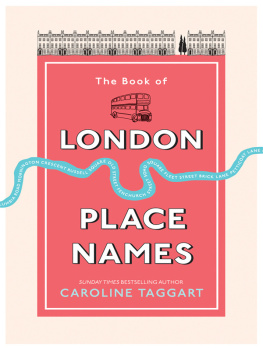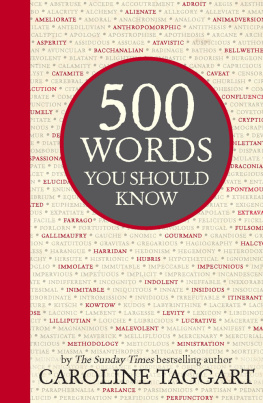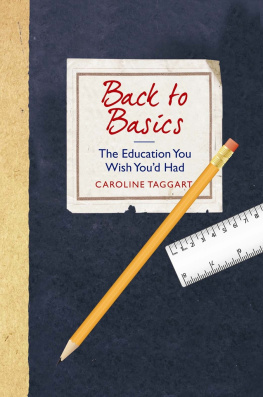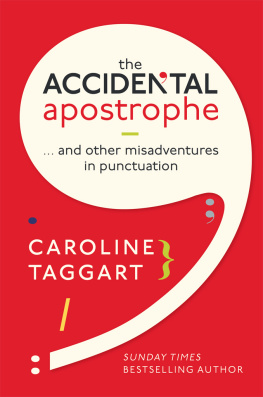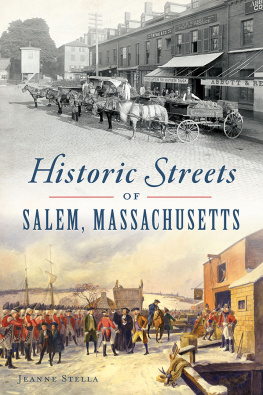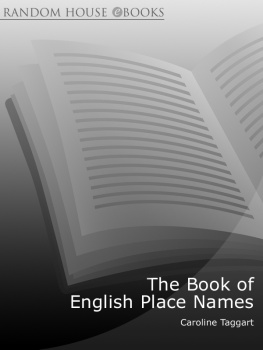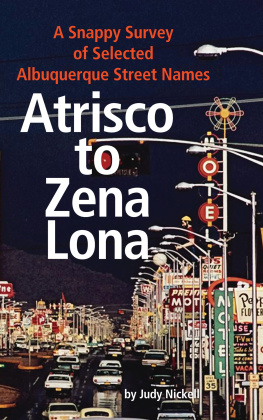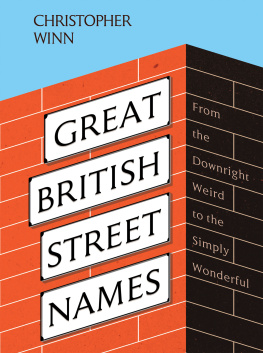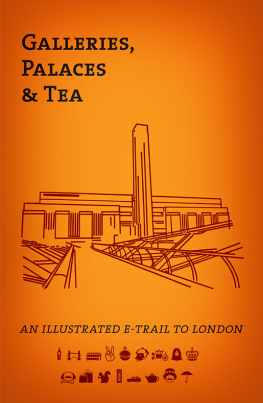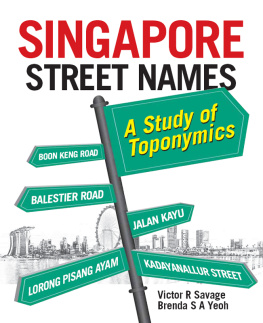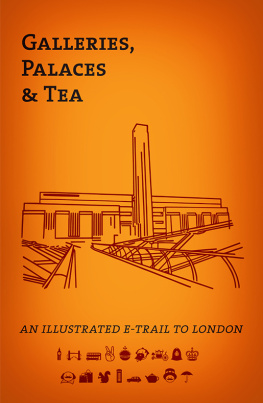CONTENTS
SOUTH OF THE RIVER SOUTHWARK,
LAMBETH AND WANDSWORTH
BEYOND THE CITY
TOWER HAMLETS AND HACKNEY
Also by Caroline Taggart:
The Book of English Place Names
About the Book
Ever wondered if Cheapside really is cheap, what you do in Threadneedle Street, or who the knights of Knightsbridge were?
Did you know that Piccadilly is actually an insult? And that Euston Road was built because there were too many cows on Oxford Street? Or that the River Fleet was covered over partly because of a drunken butcher?
Take a trip down narrow lanes, through cobbled streets and crowded markets to discover the meanings behind the citys place names. Meet forgotten residents whose names survive in the places where they lived and uncover tales from Londons murky past that have shaped the modern city.
From famous landmarks to forgotten rivers, grand thoroughfares to lost palaces, and ancient villages swallowed up as the city grew, Caroline Taggart explains the hidden eanings behind familiar places. If you have ever wanted to peel back the layers of history and discover the people, events and stories that shaped London, then come on a journey that will show you our capital city in a new light...
For Camille and Mishak, in the hope that they
will one day love London as much as I do
John Stow, the great Elizabethan chronicler whose work will be much referred to in the following pages, begins his Survey of London by quoting the earlier Welsh historian Geoffrey of Monmouth. According to Geoffrey, London was founded in about 1108 BC by Brute or Brutus, a descendant of the demi-god Aeneas, the son of Venus, daughter of Jupiter who was also the ancestor of Romulus and Remus, legendary founders of Rome.
Stow goes on to quote the Roman historian Livy as saying that, when writing of antiquity, it is acceptable to interlace divine matters with human, to make the first foundation of cities more honourable, more sacred, and, as it were, of greater majesty.
This is Stows characteristically gentle way of telling us that what Geoffrey of Monmouth had written was tripe. Well-intentioned, entertaining tripe, perhaps, but tripe nevertheless.

That said, the early history of London is vague. The first mention of it comes from the Roman historian Tacitus in the second century AD ; he tells us that Londinium is much frequented by a number of merchants and trading vessels. It is unlikely to have been a substantial place before the Roman invasions (Julius Caesar in 55 BC and the Emperor Claudius in 43 AD ), but it certainly existed, probably as a small settlement on the hills on either side of the W ALBROOK that is, roughly modern C ORNHILL and Ludgate Hill, on which St Pauls stands. Londinium is certainly a Latinised version of an older, British name, and attempts to explain its meaning have occupied scholars for centuries. Geoffrey of Monmouths story of King Lud (described under Ludgate in the section ) is generally discounted; other suggestions include settlement associated with Londinos, a nickname that might have been given to a man known for his boldness, or settlement at the unfordable part of the river. This last would be geographically accurate the lowest fordable point was at W ESTMINSTER , some 3 kilometres upstream from the original settlement. It seems to be the favoured explanation at the moment, but who knows when further information may come to light and change peoples minds?
Also lost in the mists of time is the meaning of Londons most significant natural feature, the Thames. It too is of pre-Roman origin and may mean something as simple as flowing. A fairly basic name for a river, you might think, but then it would have been the only major one that the early inhabitants of London knew. Modern-day Londoners still refer to it as the river, as if it was the only one that existed or at least the only one that mattered, and this may well have been the rationale for the Celts of 2,000 and more years ago.
Very few Celtic place names have survived in the London area; those that have tend to refer to physical features (rivers, hills, etc.) rather than settlements. The rivers B RENT and the Lea that gives its name to L EYTON and L EYTONSTONE are Celtic in origin, and the otherwise unremarkable suburb of P ENGE has, for reasons of its own, also held on to its Celtic roots.
Under Roman rule Londinium grew and prospered. It wasnt a major garrison, but it was an important trading place, with a wall (), and all the other trappings of Roman civilisation. In due course, however, the Roman Empire started to collapse and the Roman forces withdrew from Britain. Leaving, as far as London is concerned, almost no surviving place names, but a structure of walls, gates and roads that would define the city, off and on, for another thousand years.
The city at this time was a smaller version of what we now call the City: the wall confined an area rather less than todays square mile. That was to change when the Roman stranglehold on Britain weakened. Three different groups from across the Channel the Angles, the Saxons and the Jutes began first to raid the coastline and then from the fifth century to invade and settle. The ones who took over the area around London were the Saxons. They founded what became the mighty kingdom of Wessex (the West Saxons, with their capital at Winchester) but also established southern, eastern and middle groups that are remembered in the names of Sussex, Essex and Middlesex. Their language was what we have come to call Old English and it was more influential in the naming of English settlements than any other before or since.
For some reason the Saxons settled not within the London walls but further west, along what is now the S TRAND . Perhaps it was simply that they didnt care for cities in the way that the Romans did: they were more likely to create a number of smaller settlements than the one very large one that the Romans viewed as the focal point of civilised life. That doesnt mean that the Saxons were disorganised far from it. Bede (673735), the Northumbrian-based monk regarded as the father of English history, wrote that in the early seventh century London was a trading centre for many nations who visit it by land and sea and late twentieth-century excavations in the region of C OVENT G ARDEN found evidence of a much more substantial town than had previously been suspected. The Saxon settlement was called Lundenwc, with the Old English word for a trading place or harbour added to their version of the existing name.
Britain or England, as this part of it was soon to become was never peaceful for long in this period; and the next major upheaval was caused by the arrival of the Danes. Invaders from Scandinavia, also known as Vikings or Norsemen, had taken over most of northern England by the end of the 860s and soon turned their attention to the south, where the kingdom of Wessex was the only one to put up serious resistance.
Wessex was lucky to have as its ruler the man we now know as Alfred the Great. He came to the throne in 871, by which time the Danes, after a series of bloody massacres (or so the English chroniclers describe them), had occupied London. In 878 Alfred defeated the Danes in a battle in Wiltshire that was decisive enough for him to do a deal: the Danes would convert to Christianity and retain control of the north and east of England (the boundary was a rough diagonal running from London to Chester), leaving Alfred in charge of the rest. To protect his territory, Alfred set about fortifying or refortifying a network of towns known as

